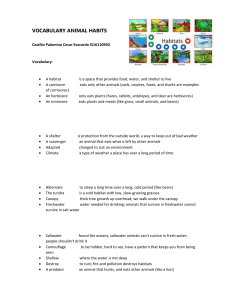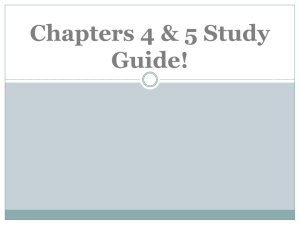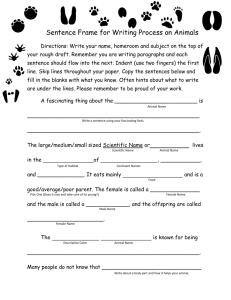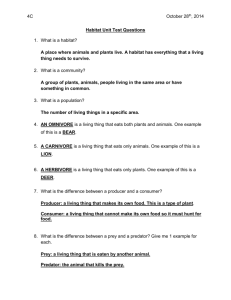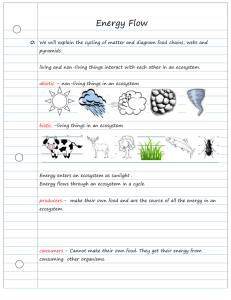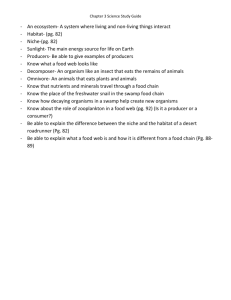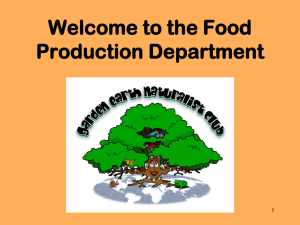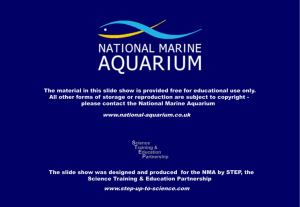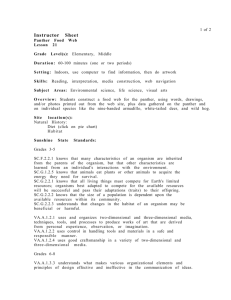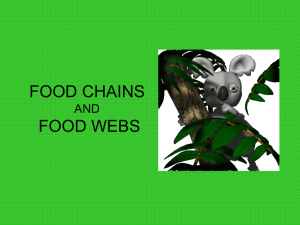Ecosystem Study Guide
advertisement
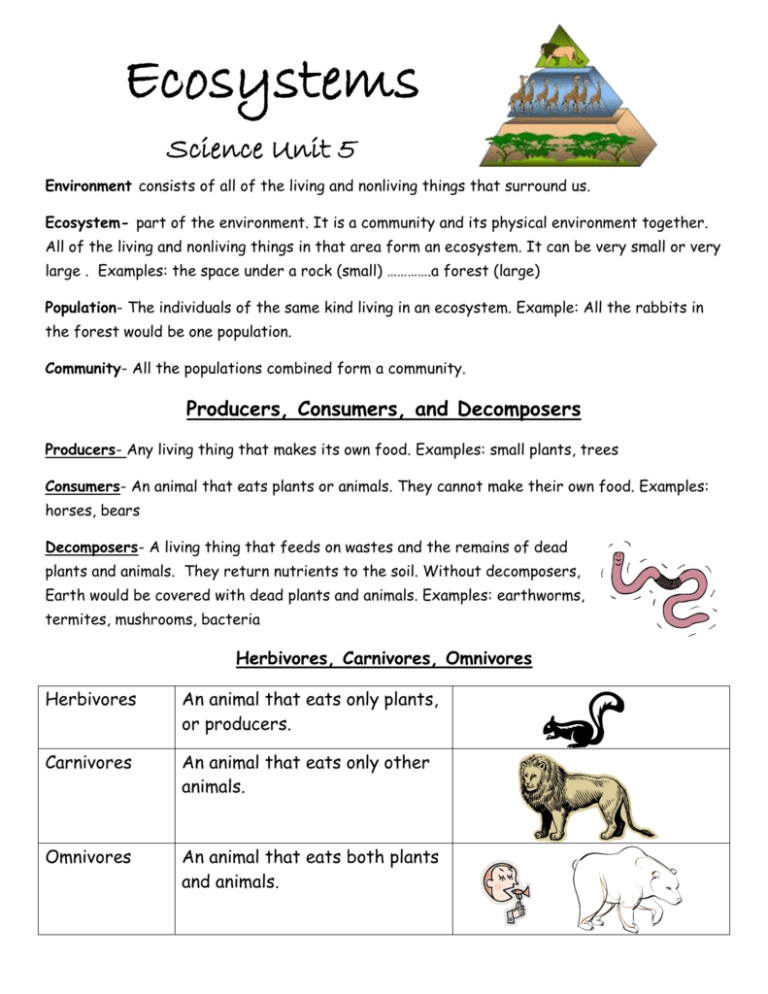
Ecosystems Science Unit 5 Environment consists of all of the living and nonliving things that surround us. Ecosystem- part of the environment. It is a community and its physical environment together. All of the living and nonliving things in that area form an ecosystem. It can be very small or very large . Examples: the space under a rock (small) ………….a forest (large) Population- The individuals of the same kind living in an ecosystem. Example: All the rabbits in the forest would be one population. Community- All the populations combined form a community. Producers, Consumers, and Decomposers Producers- Any living thing that makes its own food. Examples: small plants, trees Consumers- An animal that eats plants or animals. They cannot make their own food. Examples: horses, bears Decomposers- A living thing that feeds on wastes and the remains of dead plants and animals. They return nutrients to the soil. Without decomposers, Earth would be covered with dead plants and animals. Examples: earthworms, termites, mushrooms, bacteria Herbivores, Carnivores, Omnivores Herbivores An animal that eats only plants, or producers. Carnivores An animal that eats only other animals. Omnivores An animal that eats both plants and animals. Habitats and Niches Habitat- An environment that meets the needs of an organisms. Animals must live in an environment that meets their needs. Large habitat example: A bird that migrates across a continent. Small habitat example: An insect that lives under a rock. Niche: Each living thing in a habitat has a role or niche. This includes how it interacts with its habitat, how gets its food, how it cares for its young, etc. A part of a snake’s niche is to eat small animals. Without them the habitat would be overpopulated with mice, birds, and lizards. If there are too many snakes, the population of mice, birds, and lizards would become underpopulated. Food Chains and Food Webs Food Chains-A movement of food energy in a sequence of living things. All food chains start with a producer. FOOD CHAIN 1. Example: First, a consumer eats a producer (Example: a deer eats a plant.) Then the consumer is eaten by another consumer. (Example: Then the deer is eaten by a mountain lion.) 2. Example: A squirrel gets an acorn. Then a hawk eats the squirrel. Prey- Consumers that are eaten. Predators-The consumer that eats the prey. Food Webs- Several food chains that overlap form a food web. There are food webs on land and in the water too. FOOD WEB Several food chains that overlap. Energy Pyramid- Shows that each level of a food chain passes on less food energy than the level before it. Most of the energy is used at that level. Only a little energy is passed on to the next level. Biotic and abiotic – Biotic- All of the living parts of an ecosystem. Example: All plants and animals Abiotic- The nonliving things in an ecosystem. Example: sunlight, air, water, soil Basic Needs What an organism needs to survive: food, water, air, and shelter Adaptations A body part or a behavior that a living thing gets from its parents, and that helps it survive. Body Adaptations- An eagle’s talons, lizard’s long tongues Camouflage- A color or shape that helps an animal blend with its environment. It helps it hide and avoid predators. Examples: Pitcher plant, the coloring of a snowshoe hare (white in the winter but brown in the summer.) Behavioral Adaptations- A behavior that helps something survive. Instincts- Behaviors that animals begin life with that help them met their needs. Examples: Babies- crying, spiders-spinning webs Hibernation- Some animals live where the winters are very cold. Their instincts tell them to eat extra food before the winter. Then they enter a dormant, inactive state called hibernation. Their heart barely beats and breathing almost stops. They do not use much energy and survive the winter. They awake very hungry in the spring! Migration- Migrate means to move from one region to another. When animals regularly move as a group from one region to another and back, it’s a migration. It makes it possible for birds to survive winter because they go to a warmer climate. Extinction Extinction- When all the member of a certain group of living things are dead. There can be many different causes. Climate-A climate change can change the environment, and make it impossible for some species to survive. Many people believe this is what happened to the dinosaurs. They believe an asteroid hit the Earth sending up a huge dust cloud that blocked sunlight. Without enough sunlight producers (plants) died. The plant eating dinosaurs had nothing to eat and they too died. Then without the plant eating dinosaurs for the meat eaters to eat, the meat eaters died too. Human Activity- can contribute to extinction. Sometimes humans destroy habitats. People might also introduce new plants or animals to a region that cause harm. Also, pollution can harm ecosystems and the things that live there. Humans can also help prevent extinctions. Things listed as endangered have populations so small that they are likely to become extinct if steps to save them are not taken right away. Laws and wildlife refuges have helped endangered species. Also, some species are on the threatened list. This means they are likely to become endangered if steps are not take n to protect them. One of thousands……The Jaguar Jaguars, the largest of South America's big cats, once roamed much of the Americas. Today they are found in only a few remote regions.
